Though I often play with LLMs and agents, most don’t make it out of the terminal. Per @karpathy's recommendation, I thought I would be wise to spend a few hours learning a bit of Streamlit.
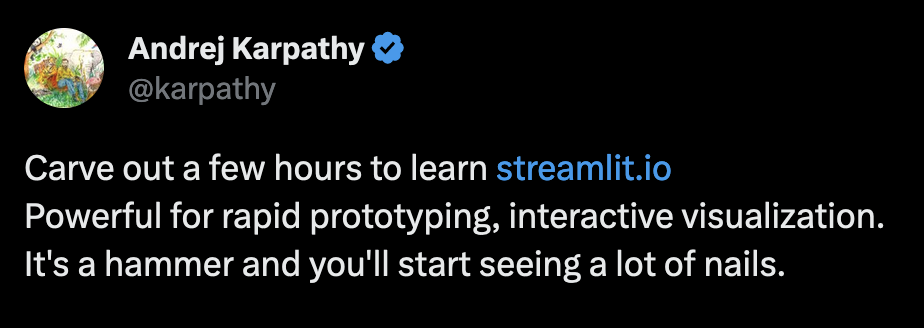
See code on leeknowlton/streamlit-exploration.
Basic Installation
Note: See the Streamlit docs for more comprehensive tutorials. These are just quick, rough notes.
-
If you’ve already set up the project, navigate to the folder and run
source .venv/bin/activateto reactivate your virtual environment. -
Create a new virtual environment
python3 -m venv .venv -
Install the streamlit package
pip3 install streamlit -
Run the demo app
streamlit hello -
Voilà!
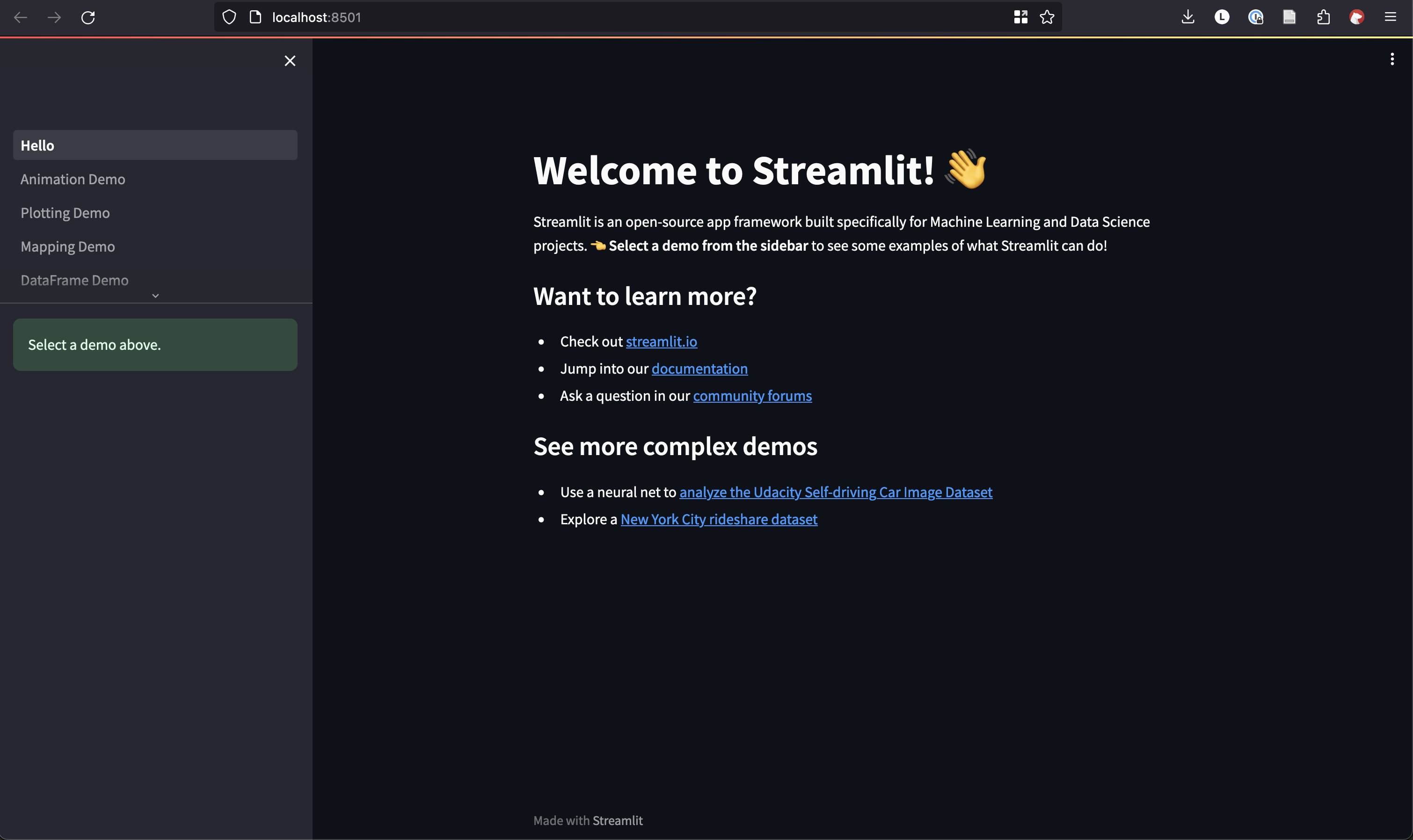
Basic tables and charts
- Using numpy to create a table with random numbers
import streamlit as st
import numpy as np
data = pd.DataFrame(np.random.randn(6, 3), columns=["a", "b", "c"])
- Visualizing the table
st.write(data)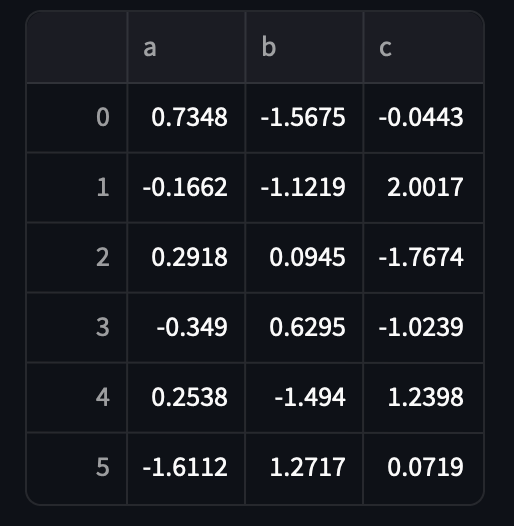
- A first attempt at adding a line chart
st.line_chart(data)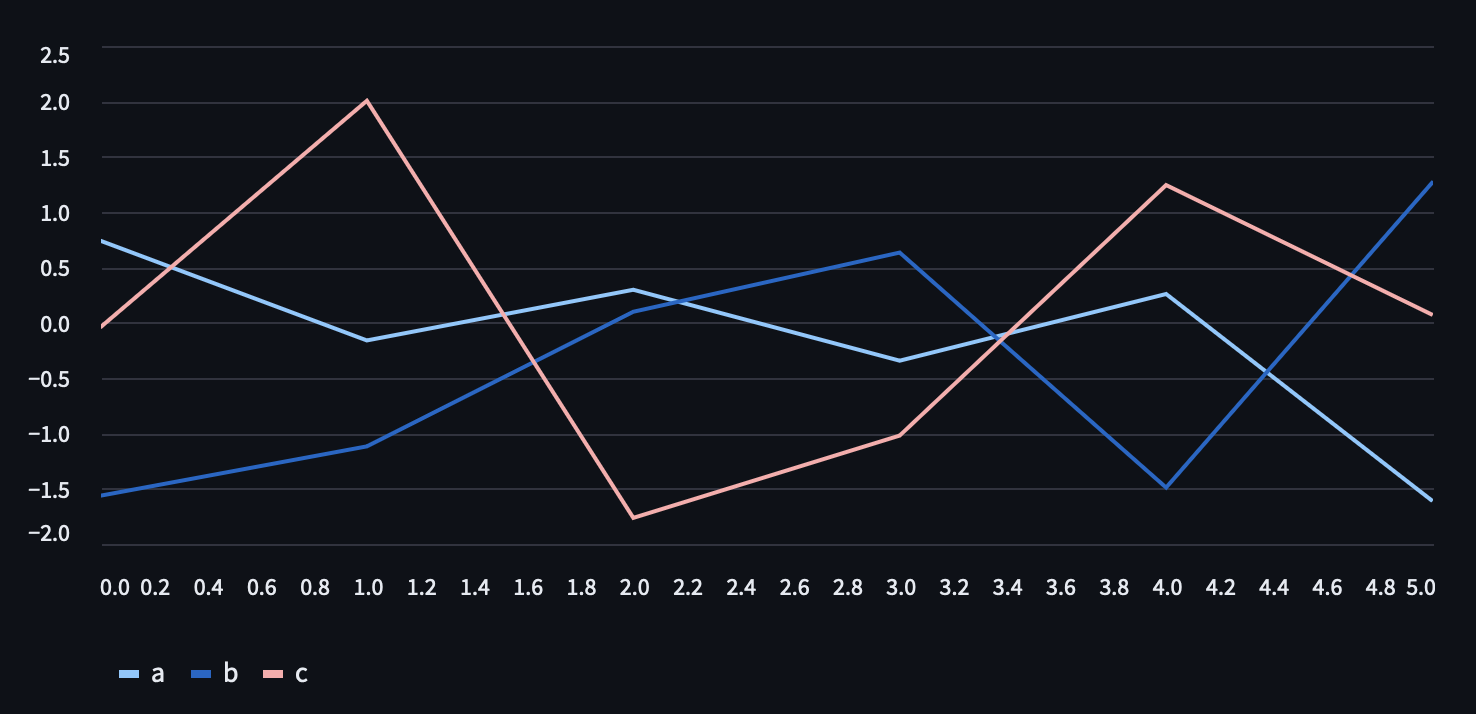
A Simple Agent Frontend
Before wrapping up, I created a simple AI agent front-end that used DuckDuckGo search as a tool.
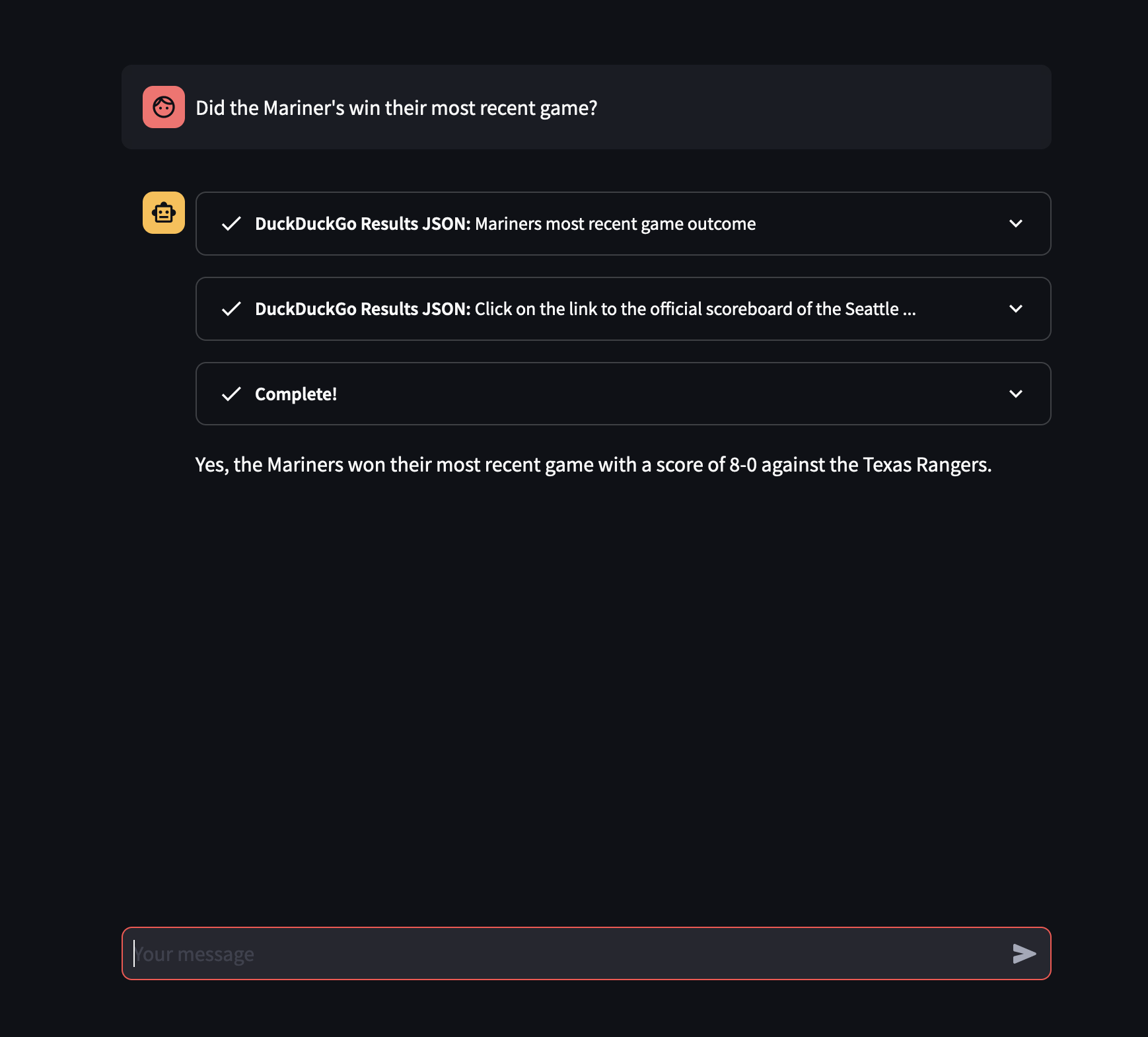
import os
import streamlit as st
from langchain.chat_models import ChatOpenAI
from langchain.agents import AgentType, initialize_agent
from langchain.tools import DuckDuckGoSearchResults
from langchain.callbacks import StreamlitCallbackHandler
from langchain.chat_models import ChatOpenAI
from langchain.tools import Tool
from dotenv import load_dotenv
load_dotenv()
openai_api_key = os.getenv("OPENAI_API_KEY")
search = DuckDuckGoSearchResults()
llm = ChatOpenAI(temperature=0, streaming=True)
tools = [
Tool(
name="Search",
func=search.run,
description="useful for when you need to answer questions about current events",
),
]
agent = initialize_agent(
tools, llm, agent=AgentType.ZERO_SHOT_REACT_DESCRIPTION, verbose=True
)
if prompt := st.chat_input():
st.chat_message("user").write(prompt)
with st.chat_message("assistant"):
st_callback = StreamlitCallbackHandler(st.container())
response = agent.run(prompt, callbacks=[st_callback])
st.write(response)